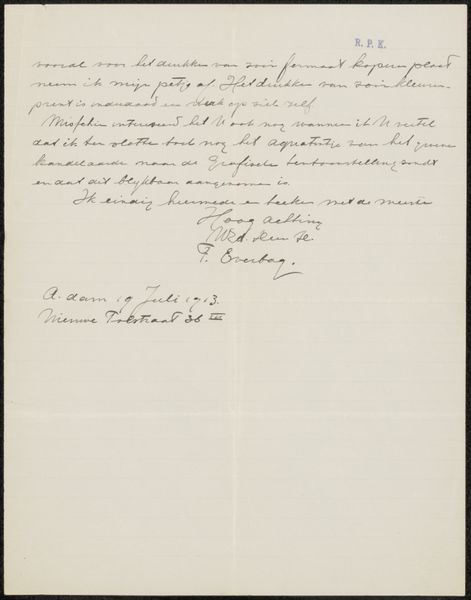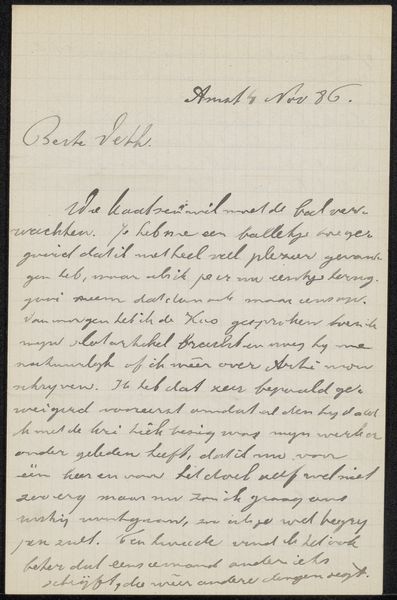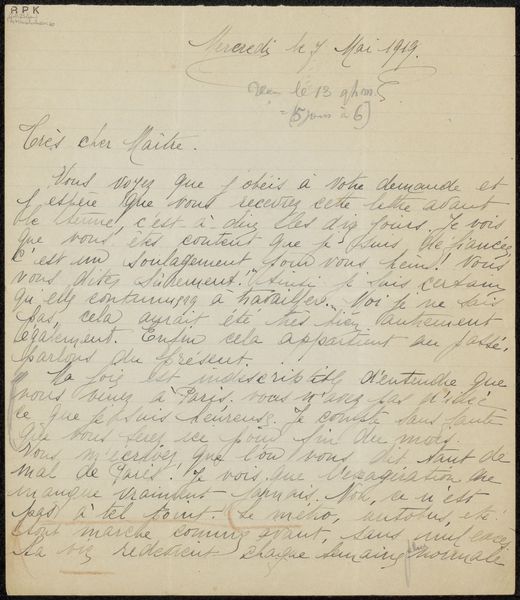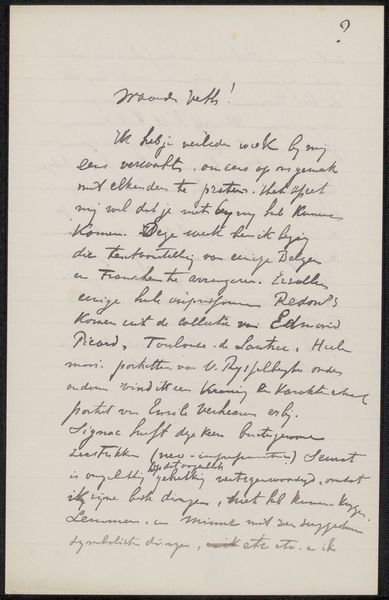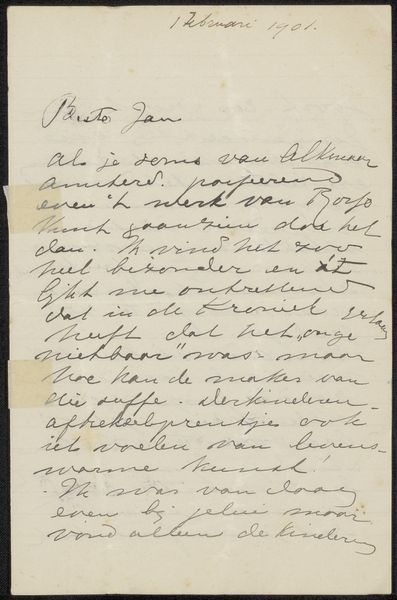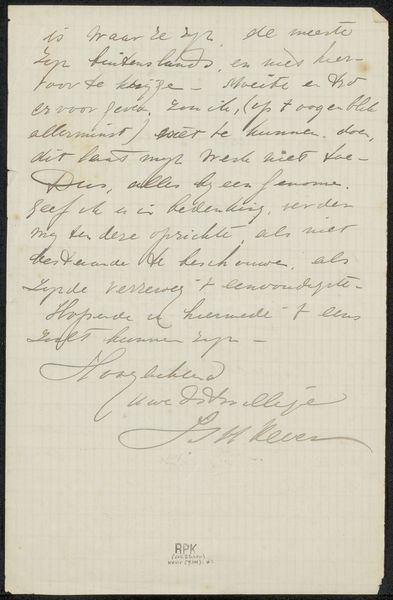
drawing, paper, ink, pen
#
drawing
#
script typography
#
hand-lettering
#
old engraving style
#
hand drawn type
#
hand lettering
#
paper
#
personal sketchbook
#
ink
#
hand-drawn typeface
#
pen-ink sketch
#
pen work
#
sketchbook drawing
#
pen
Copyright: Rijks Museum: Open Domain
Curator: Here we have Maurits van der Valk's "Brief aan Philip Zilcken," likely from 1906. It's an ink drawing on paper, currently held in the Rijksmuseum's collection. Editor: My initial impression is one of intimacy and personal correspondence, emphasized by the casual nature of the hand-lettering and the use of a readily available material like pen and paper. There’s something fundamentally human about this reliance on handwriting to produce a personal item. Curator: The hand-lettering immediately catches my eye. Note how the typeface evokes the era—it embodies the elegance of correspondence balanced by the practical demands of written communication. The slightly messy ink work speaks to its functionality over overt aestheticism. It reminds me that the act of writing itself was, and remains, symbolic. Editor: Yes, the material quality here reinforces its immediate functionality: paper and ink are not precious materials. It speaks of an efficient, straightforward exchange between sender and recipient. Who *was* Philip Zilcken? What position might he have held in Dutch artistic circles to merit the letter from Maurits van der Valk? That is a relationship shaped, materially, by networks and their power. Curator: That’s right, and understanding their connection can unlock the nuances of the letter. Considering that Van der Valk was associated with the art society Arti et Amicitiae in Amsterdam, and given the letter's reference to financial matters, perhaps it concerns professional exchanges, artistic commissions, or patronage. The text suggests a negotiation, possibly surrounding monetary compensation. Even now, such gestures possess inherent power dynamics and potential for ambiguity, no? Editor: Precisely! By foregrounding the monetary context, Van der Valk subtly implicates this piece of paper within a broader capitalist framework, challenging the conventional segregation of "art" and "economy." Its creation reflects broader social conditions and systems of exchange, of which even intimate communication is impacted. Curator: I’d agree with that sentiment. This brief note encapsulates a wealth of historical and social context. As we examine not only the script itself, but the interaction, what emerges is a vivid impression of the time and an appreciation for these handwritten artifacts. Editor: Yes, absolutely. A seemingly simple sketch exposes hidden complexities tied to its original production and cultural use, and allows us to reconsider historical art world exchanges through the very accessible lens of a letter.
Comments
No comments
Be the first to comment and join the conversation on the ultimate creative platform.




